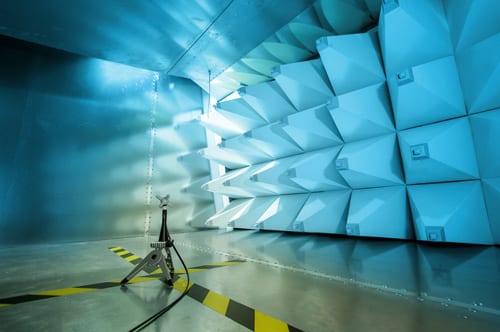EMC (Electromagnetic Compatibility) testing is crucial for ensuring that your electronic devices can operate as intended in the ir electromagnetic environment without causing or being affected by electromagnetic interference. EMI (Electromagnetic Interference) occurs when an electronic device’s operation is disrupted by electromagnetic interference from an external source.
ir electromagnetic environment without causing or being affected by electromagnetic interference. EMI (Electromagnetic Interference) occurs when an electronic device’s operation is disrupted by electromagnetic interference from an external source.
The Basics of EMC Testing
EMC testing is not just about functionality; it’s also about safety. By identifying and addressing potential electromagnetic interference issues early on, you can prevent malfunctions that might pose risks, particularly in environments with numerous electronic devices. Moreover, EMC testing is a legal requirement in many countries, underscoring its universal significance in upholding standards that protect both devices and users.
EMC testing consists of two main parts:
- Emissions Testing: This phase measures the electromagnetic energy emitted by a device during operation, ensuring it remains within acceptable levels to avoid disrupting other devices or services.
- Immunity Testing: Here, a device’s ability to function properly when subjected to electromagnetic disturbances from external sources is evaluated. This ensures reliability across various electromagnetic environments.
The EMC Testing Process
To navigate EMC testing effectively, consider the following steps:
- Identify the applicable EMC standards for your device and target markets.
- Conduct pre-compliance testing to detect and address potential EMC issues at an early stage.
- Choose a certified EMC testing lab with the expertise and facilities needed, such as Eurofins MET Labs.
- Utilize appropriate EMC test equipment, including anechoic chambers or shielded rooms devoid of ambient radio frequency.
Navigating EMC Regulations and Standards
EMC regulations vary across countries and industries, with stricter requirements for sectors like medical devices and military equipment. Adherence to specific EMC regulations, such as the Code of Federal Regulations, Title 47 Part 15 (USA), EN standards (EU), CISPR, and IEC 61000 Series Standards (International), is imperative for compliance.
EMC certification typically involves passing tests for emissions and various immunity criteria, failure of which could significantly delay product launches.To increase the likelihood of achieving EMC compliance:
- Establish a pre-compliance test lab to identify issues early and minimize failures during formal testing.
- Integrate EMC considerations into the design phase to reduce emissions and enhance immunity.
- Collaborate with experienced EMC testing providers like Eurofins MET Labs for comprehensive support and guidance.
Prioritizing EMC Compliance with Eurofins MET Labs
EMC compliance isn’t merely a regulatory obligation; it’s essential for ensuring product reliability, safety, and market success. Addressing EMC concerns early in the design phase and partnering with experienced testing providers like Eurofins MET Labs can help avoid costly setbacks. Our cutting-edge facilities, technical expertise, and support services are tailored to guide you through the complexities of EMC testing, ensuring your products meet the highest electromagnetic compatibility standards.
Ready to achieve EMC compliance and launch your products with confidence? Contact Eurofins MET Labs today to learn more about our EMC testing services and how we can support your success.



